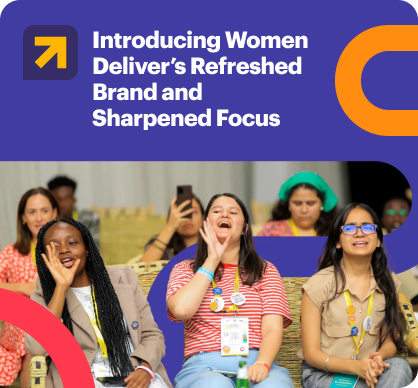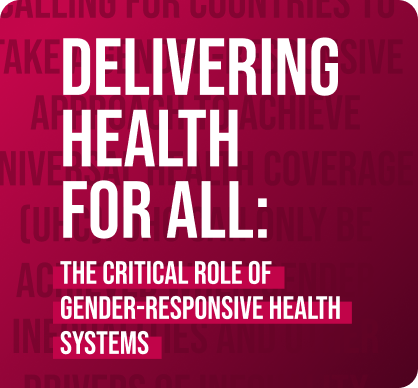Should Women Perform Their Own Abortions?
This article features Sarah Natali Soysa (current Women Deliver Young Leader) and Saba Ismail (Women Deliver Young Leader alumna)
Inna Hudaya was a woman in trouble. Lying in a shoddy hotel room, she squeezed her eyes closed as an old woman performed an abortion on her with no anesthesia and no painkillers. They barely spoke a word after the exchange of money — a lot of money, money Hudaya had borrowed and for which she had sold many of her possessions including her motorbike to repay. This, Hudaya thought to herself, is how I will die.
But what else was she supposed to do? She was 22, pregnant, unmarried, and living in Indonesia, a country where abortion remains illegal in nearly all cases and out-of-wedlock pregnancy is intensely stigmatized. A medical student, Hudaya was just getting a toehold on a life she hoped would keep her out of Tasikmalaya, the conservative city she fled after high school. Having a baby would mean the end of everything: her studies, her relationship with her family, her freedom.
The procedure ended, and Hudaya walked out of the hotel room alive. The pain, though, persisted. Her relationship ended. A close relative disowned her, telling her it is a sin for a woman to kill her own blood. For years, Hudaya had the same dream: a baby chasing her, crying.
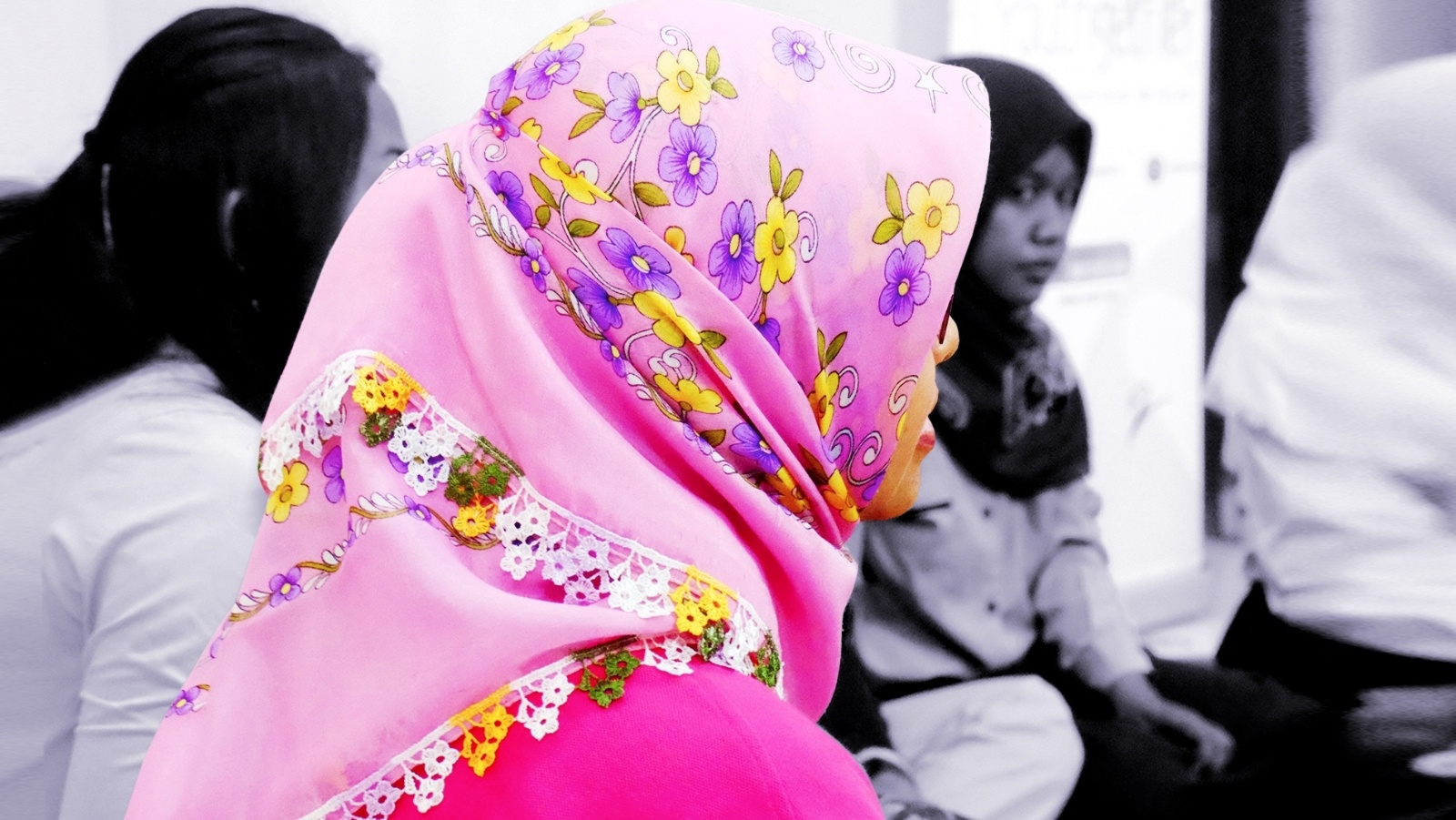
Today, it’s Hudaya whom Indonesian girls call when they’re in trouble. They usually reach one of the counselors staffing the phone lines at Samsara, an organization Hudaya founded that has walked thousands of Indonesian women though the process of ending their pregnancies safely. For Hudaya, getting here has been a path of zigs and zags, of depression and post-traumatic stress disorder, of finding herself transformed from the ambitious young woman critical of her town’s conservative religiosity into a medical school dropout and a disciple of the American pro-life movement. Thirteen years after she lay on a hotel room floor sure her life was over, Inna Hudaya has shape-shifted yet again, into one of the most radical abortion activists in the world. And the model she has embraced — taking abortion out of the dominion of doctors and putting it in the hands of women — is both increasingly adopted by grassroots activists around the world and testing the fundamental values of the abortion rights movement.
Even in the United States, where abortion is broadly legal, these are the questions challenging veteran feminists and young activists alike: Should the DIY abortion be a last-ditch option, used only in the face of restrictive laws that would otherwise make the procedure impossible? Or is letting women terminate their pregnancies themselves a logical extension of the pro-choice maxim “Trust Women”?
If you’re pregnant in Indonesia and you don’t want to be, you have a few options: You can follow the law and carry your pregnancy to term. You can stroll down Jl. Raden Saleh in Jakarta, wait for a stranger to ask, “Do you want to get rid of that?” and hope he brings you to someone skilled at abortion who will charge you in rupiah and not sex. You can contact a private doctor who may do you this favor, for an astronomical cost, or try to find some black-market pills. You can do your own abortion without much information — some women use sticks, some throw themselves down stairs, some get a boyfriend or husband or friend to beat them in the stomach.
Or you can call Samsara.
Every month, counselors at the Samsara hotline field as many as 600 phone calls from 70 or 80 women.
The counselors talk to callers about their options: childbirth, adoption, or abortion. They gather basic information, including the caller’s name (often fake), age, marital status, and location, and help determine the gestational age of the pregnancy. A growing number of women get information on the Samsara website. Others want more detail or a reassuring voice on the other end of the phone.
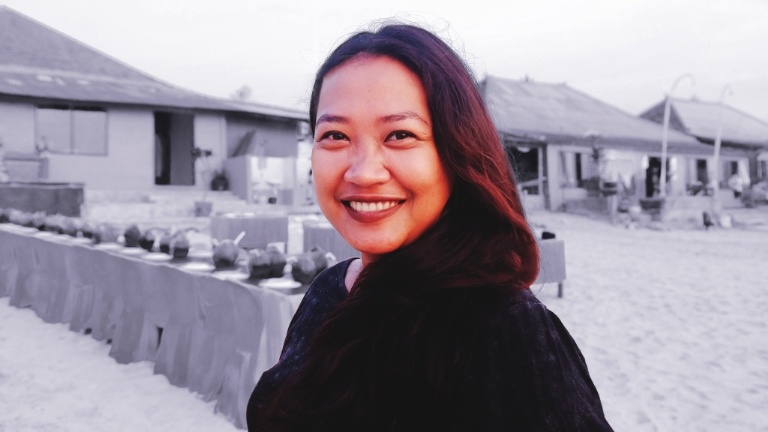
Samsara doesn’t provide abortions directly, but it keeps detailed records of reliable sources of misoprostol, a pill that induces miscarriage. If a woman doesn’t want to go the misoprostol route, counselors know which doctors are willing to perform surgical abortions. They are also well-versed in World Health Organization (WHO) protocols on how to use misoprostol, and they explain to women what to watch out for, how to deal with complications, what to tell a doctor if they have to go to the hospital, and how to make sure the abortion worked. Because Indonesia ratified the Universal Declaration of Human Rights, which guarantees the freedom to seek and impart information, Hudaya and her team hope to stay free of legal trouble. Her quest, Hudaya says, is to give women the most accurate information possible to keep them safe.
Hudaya herself didn’t have that privilege. In the four painful years following her own abortion, she searched for help online, coming up largely empty in her home country. Then she found websites of American pro-life groups, promising to help women relieve post-abortion grief, soothe emotional and spiritual wounds, and find healing, joy, and forgiveness after abortion. She emailed them, and the informal care they offered set her on the path to recovery.
Hudaya started Samsara to provide Indonesian women with the kind of post-abortion counseling she received from those pro-life ministries. But the more women called the hotline, and the more Hudaya talked with women’s rights advocates from around the world, the more she began to doubt the pro-life model. She also began researching pregnancy development and, having never had formal sex education, was stunned to see that a six-week-old embryo — the point at which she had her own abortion — looked nothing like the gruesome photos she saw on pro-life websites, and nothing like the crying baby that flashed through her dreams.
At a training in 2009, Hudaya heard about the concepts of human rights and gender equality for the first time. “Not everyone will end up the same like us if they go through abortion,” she said. “And actually, if they can have safe abortion, they don’t need to go through this depression. I think that was the turning point [for me] from pro-life into pro-choice.”
Samsara continues to provide post-abortion counseling to women in need. But Hudaya wanted better for other women than shame and regret.
“In a good way, I learned from [the pro-life counselors] how to forgive myself, how to deal with my problem, how to reconnect with myself,” she said. “But I think the worst part is to think it’s a sin and that I have to regret it. Because now when I have to think about it again, I think that is one of the best decisions I ever made in my life.”
Outside one of Indonesia’s bustling cities where Hudaya and the Samsara team work but which I am not naming for security reasons, universities dot the hills and students whiz by on motorbikes. Close to these campuses are a handful of youth-focused health clinics, where doctors and nurses talk to young people about sexual health and contraception — not an easy task in a country where premarital sex is considered socially unacceptable and where parents routinely come into the exam room with their daughters. Birth control is free, but only if you’re married. Many doctors simply won’t provide contraception to unmarried women.
Information, though, is plentiful. Students say that on campus, fliers ask women if they’re pregnant and then list a phone number to call. One young woman says her teenage friend had an abortion just a few months back; without access to contraception, she was soon pregnant again, a broke, unmarried student without many options.
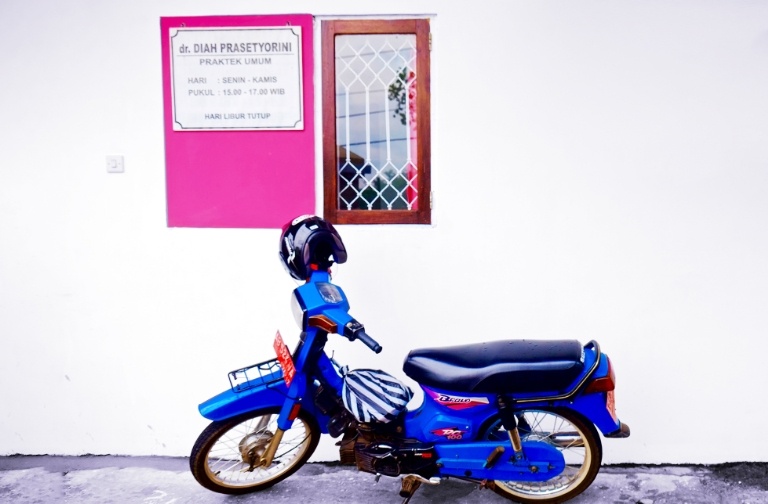
Seeking out a surgical abortion means finding a willing doctor or, often, a layperson who knows how to do it, which is just as hazardous as it sounds. “If [women] don’t have enough money [for an abortion], they have sex with the middleman first,” Hudaya said. “If they don’t have enough money, the doctor will send them somewhere else with a blindfold. Or sometimes you’re in a room with four women, and you’re lucky if you’re the first woman, because then after you finish, you go. But if you are number four, then you have to see the other three.”
Even doctors who offer safe surgical abortions don’t always treat women well. “We had one say to a client, ‘I hope you can find a man who will accept you for who you are, because you are not a virgin anymore,’” Hudaya said “Or you have an abortion and they don’t give you painkillers so that you learn from your mistake.”
By contrast, misoprostol costs about $30 and a woman can take it at home. While drug dealers and cheats have flooded the internet with counterfeit goods, Samsara has a blacklist of bad sources. The organization’s good list includes sources all over the country, so even women living in rural areas or on one of the most far-flung of this nation’s thousands of islands may not have to travel far.
In Indonesia, abortion is only allowed to save a pregnant woman’s life or for rape victims, and usually requires a husband’s consent. Rape survivors are typically forced to go to the police — an often-humiliating process, where Hudaya says women have been asked what they were wearing and if they were aroused. There is no exception for incest.
Even health-care professionals often don’t seem troubled by the dire situations young women face. In November 2015, a general surgeon at a hospital in Yogyakarta who often treats pregnant women said that the week before, a 13-year-old girl came to see him, pregnant. His first reaction: “Congratulations.”
He asked if she was married, but not about potential rape or incest. “The most important thing for me is to motivate her to continue the pregnancy,” he said. “Why she got pregnant is her business.”
According to UNICEF, girls who give birth before their 15th birthdays are five times more likely to die of pregnancy-related causes than women who have their first child in their 20s. They’re more likely to suffer debilitating injuries. They are often trapped in extreme poverty. And their babies are more likely to die.
“Oh, yes, she’s a high-risk pregnancy,” the doctor said. Mentally, he said, she’s still a child, and having a baby means she’ll have to drop out of school. Physically, her pelvis is small, which could make birth dangerous. But, he explained, none of that justifies an abortion. “If she kills the baby,” he said, “that is a double sin.”
This, Hudaya says, is what happens when a country outlaws abortion: It sends the message that women should feel guilty about their choices, and allows doctors to judge and humiliate them. When women seek medical care, she said,
“You don’t know if they’re going to behave as doctors or if they’re going to behave as your priest.”
Misoprostol was developed in 1973 and is still used to treat ulcers and to stop postpartum bleeding. A warning is often listed on the packaging of misoprostol ulcer medications: poses a serious risk of miscarriage. By the late 1990s, women had gotten wise to that side effect and were using the drug to induce abortions. Today, misoprostol, sometimes in conjunction with drugs such as mifepristone or methotrexate, is one of the most common methods of abortion in the world.
Misoprostol’s efficacy for safe abortion and for hindering hemorrhaging during birth has placed it on the WHO’s list of essential medicines. About 85 percent of women who use the drug up to 12 weeks of pregnancy and according to WHO guidelines have successful abortions. If women take misoprostol in combination with mifepristone, a drug that blocks the effects of the hormone progesterone, first-trimester abortions are 95 percent effective.
When medication abortion was approved by the U.S. Food and Drug Administration in 2000, abortion rights advocates cheered: Finally, there was a way to allow women to have safe, early abortions at home, away from clinics where protesters besieged pregnant women and where, sometimes, abortion opponents shot at employees and patients, or sent anthrax, or set off firebombs.
These hopes have not come to fruition. Medication abortions make up less than a quarterof abortions in the United States, in large part because the anti-abortion movement has targeted abortion-inducing pills. Some states legally require that doctors adhere to outdated medical regimens, or make a woman be physically in the same room as a physician when she takes the first tablet, or compel her to return to the clinic several times over.
Misoprostol’s off-the-books use, however, has radically transformed the experience of self-directed abortion. Pre-Roe, there were safe but clandestine abortion providers motivated by a concern with women’s health, but there were also a number “back-alley butchers” cashing in on desperation, sometimes killing women in the process. The coat hanger became a symbol of an era in which women often inserted those metal hooks into their vaginas to induce abortions.
Today, complications from misoprostol occur in about 1 percent of cases if the drug is taken within the first 12 weeks of pregnancy. They are rarely fatal.
Indonesia is one of the countries where medication abortion has, at least anecdotally, changed everything. In 2011, Samsara began telling women where to get it. Now, when women call back after their abortions, they marvel at how easy it was.
“Misoprostol is revolutionary,” Hudaya said. “That is the magic pill.”
Whether this magic pill should be in the hands of American women outside the formal medical sector is a question currently vexing the American pro-choice movement.
“There is much discussion now of whether do-it-yourself is the thing to push, or does it weaken the arguments for incorporation of abortion into the medical establishment,” said Carole Joffe, a sociologist and author of several books on abortion rights. “It’s a fascinating question, how far this do-it-yourself movement will go.”
“I don’t want to discount the expertise and training that abortion providers have,” said Steph Herold, the co-founder of the Sea Change Program, an organization that seeks to end abortion stigma. But, she added, “If we really trust women, if that’s a slogan we really get behind, it should mean we trust women to do their own abortions when they want to.”
Even today in the United States, where abortion is an ostensibly legal procedure that can be performed by trained doctors, women self-induce. In June, the Supreme Court ruled onWhole Woman’s Health v. Hellerstedt, the biggest abortion case in more than two decades, striking down provisions of a Texas law that shuttered more than half the clinics in the state and, researchers and advocates say, drove women to clandestine and dangerous procedures. The reemergence of the “back-alley abortion,” this time with drugs purchased at informal flea markets and Mexican pharmacies, was a compelling narrative in the media coverage of the Texas law and made it subtly into Supreme Court Justice Ruth Bader Ginsburg’s concurrence in the case: “When a State severely limits access to safe and legal procedures, women in desperate circumstances may resort to unlicensed rogue practitioners, faute de mieux, at great risk to their health and safety,” she wrote.
This Supreme Court decision “has had a great and positive impact already,” said Amy Hagstrom Miller, the founder and CEO of Whole Woman’s Health, the chain of women-centered clinics that brought the Supreme Court case challenging the Texas restrictions. Her clinics have been able to see many more patients. But that doesn’t mean new clinics will replace old ones anytime soon or that the access crisis isn’t ongoing.
“Clinics do not reopen overnight,” Hagstrom Miller said. “The laws that have passed over the last years in Texas have decimated the care infrastructure and it will take some time to rebuild.”
A variety of other anti-abortion regulations that were not evaluated by the Supreme Court in this latest case also remain in place in Texas, including a law that mandates parental consent for minors and requires all women to produce proof of age before having an abortion, and another that makes women pay at least two visits to an abortion clinic with at least 24 hours between them. And many states still tightly regulate medication abortion and require women to seek the procedure at a clinic. These rules and others like them have long forced women “to take matters into their own hands and find options on their own,” Hagstrom Miller said.
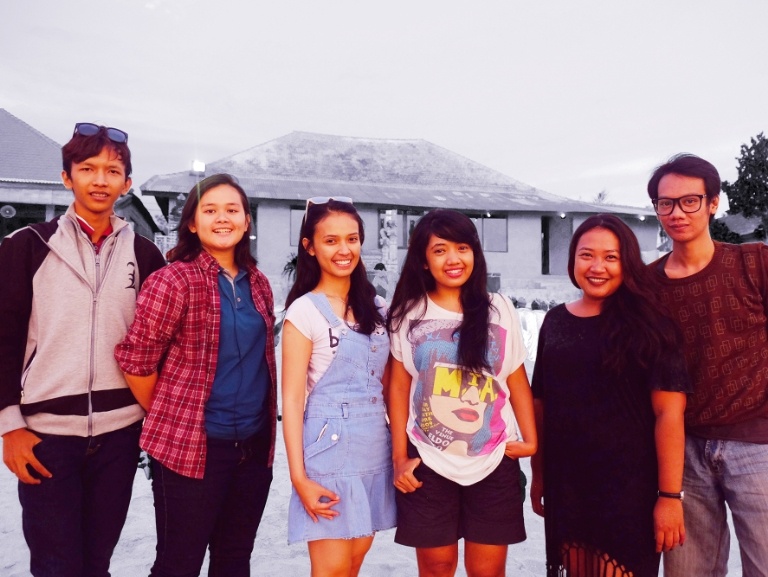
Women self-induce abortions for all kinds of reasons. Some are unable to afford the procedure or travel to the clinic. Others are undocumented immigrants who can’t travel for fear of being arrested. Still others rely on Medicaid for their health care, and the Hyde Amendment prohibits federal funds from funding abortions. Some belong to communities that have been historically mistreated by the medical system and distrust doctors. And for some women from countries where abortion is illegal, taking abortion-inducing drugs at home may just be what they know as the way to end a pregnancy.
“Before I was in Texas, I ran a clinic in New York City from 1994 to 2000, and we were actually seeing self-induction in New York during that time, primarily in immigrant neighborhoods,” Hagstrom Miller said.
While medication abortion is not a new invention, its off-the-books use is anecdotally becoming more common, and abortion rights advocates say they fear what will happen when abortion opponents catch up to this new reality. The American anti-abortion movement has spent the last decade morphing itself into a kinder, gentler “pro-life” ideal, curtailing abortion rights with the claim that anti-abortion laws protect women. They’ve opened up anti-abortion “crisis pregnancy centers” they say help women in need. Clinic protesters have reinvented themselves as “sidewalk counselors.” The pro-life movement now claims it, and not the pro-choice one, seeks to protect both women and their children.
Self-induction may challenge that benevolence. In March, Republican presidential contender Donald Trump said that if abortion were illegal, “there has to be some form of punishment” for the woman. Marjorie Dannenfelser of the anti-abortion group Susan B. Anthony List put out a statement condemning Trump’s remarks and claiming no pro-lifer wanted women to wind up in jail for abortion. “Punishment,” she said, “is solely for the abortionist.”
Less clear is what happens when the abortionist is the woman herself. According to Jill Adams, a lawyer and the chief strategist for the Self-Induced Abortion (SIA) Legal Team, there are 40 different types of laws in the United States that prosecutors could use to target women who self-induce, or anyone who helps them, ranging from the unauthorized practice of medicine to drug trafficking to child abuse. Some women have already been prosecuted for allegedly terminating their own pregnancies, and advocates worry prosecutions could potentially extend to anyone who so much as gives a woman information on self-induction.
Most of the big abortion rights organizations have preferred to sidestep the complex legal landscape of self-directed abortion altogether by advocating for safe, legal abortions in clinics and hospitals. While American pro-choice leaders almost universally applaud efforts like those in Indonesia to get women safe but illegal abortion care, they remain troubled by reports of self-administered abortions in the United States. After this latest Supreme Court victory, though, some abortion rights leaders say the movement can finally play offense and push for what women need. The next frontier for the newly emboldened pro-choice movement: safe, legal medication abortion, even outside of a clinical setting.
“Particularly as the FDA catches up to the safety of medication abortion, we see it playing a larger and larger role in the landscape as we move forward,” said Ilyse Hogue, president of NARAL Pro-Choice America. “What Whole Woman’s Heath going to the Supreme Court did was help the entire movement, and certainly NARAL, take a step back and say, ’We got here first because we chose to bring this case, because we believed we could win it, and we got here because we have had to defend our clinics and our doctors for a very long time.’” Now the movement is able to “take a step back, and look at the entire landscape and our goals and our mission, and ask, ’What should we be doing?’” Hogue said. One answer: “Expanding access to medication abortion, especially as the science has led the way to understanding that this is a really safe alternative.” That access, Hogue said, doesn’t have to be in a clinic — it could be in a woman’s own home, so long as she had the guidance and support of a medical professional, and was able to obtain the pills legally so she could be confident that, unlike black-market medications, they were safe and regulated.
The rise of self-induced abortion, and feminist work to make self-inducing safer and more accessible, is happening around the world. Hotlines in more than a dozen countries now give women information about how to end their pregnancies. Groups including Women on Waves and Women on Web were pioneers of putting misoprostol into women’s hands, for more than a decade delivering the drug via a ship in international waters, and later expanding to mail and even drone drops. These groups often lack financial support and face challenges from law enforcement and ideological opponents, but they persist because so many women use them.
“It’s very difficult to get funding for controversial issues or hotlines operated by young feminists,” said Sarah Natali Soysa, who runs an abortion hotline in Sri Lanka. “Most of our counselors work for free.”
Saba Ismail, the founder of a hotline in Pakistan called Sahailee, says some doctors will perform abortions, but at a cost of $350 to $550, an extraordinary sum for Pakistani women who are often not permitted to work. Others will degrade a woman simply for asking about her options.
If an unmarried girl came in and asked for an abortion, “’I will kick her out of the hospital,’” Ismail recalls one doctor telling her. “’She has done a bad thing to our society and the family, so she deserves to be kicked out.’”
Ismail, too, has paid a high price for working on this issue. While meeting with women near Nowshera, a hub of Taliban militancy, a Taliban representative “came to me directly and said, ‘Don’t work on this if you want to be alive,’” Ismail said. “She advised me to tell these women how to be obedient wives and how to be obedient daughters, and not to discuss the issue of abortion with them.”
Ismail takes the many threats she receives seriously. She’s had to flee from her home, staying on the run for months, and for a while, the hotline shut down for fear of violent reprisal.
“It’s a life risk to work on abortion,” she said.
What is now less of a life risk for women in Pakistan: abortion itself. This, Ismail said, is thanks to misoprostol. Abortion is widely outlawed in Pakistan, but misoprostol is legal for the treatment of gastric ulcers and postpartum hemorrhaging, and available over the counter for about $1.
“The good part of this medication is that when a woman uses it, it’s just like a normal miscarriage,” she said. “So when a woman goes to the doctor if she has an incomplete abortion, she can just say, ‘I had a miscarriage.’ The doctor will not be able to trace anything in her body or in her blood.”
Other feminist groups are formalizing standards that would give women a line to a formal medical practitioner while they self-induce. The international reproductive rights group Gynuity promotes and studies a model wherein women are dispensed misoprostol and information about how to use it, and have a clinician on call for guidance and follow-up. But its reach remains limited, especially in places, like the U.S., where abortion is politically contentious.
In Indonesia, I meet with Hudaya and her team as the sun sets over a beach in Bali. The group has traveled here for a team-building meeting that was supposed to butt up against a big international family-planning conference; the conference had just been canceled because an ashing volcano shut down the airport. Hudaya had been scheduled to speak, tasked with sharing best practices for the many advocates looking to start safe abortion hotlines in their own countries.
When I ask Hudaya what’s next, she points to my smartphone. Nearly everyone in Indonesia has one, so Hudaya and her team, along with a handful of international NGOs, are currently testing a sexual health app that will include information about safe abortion. It advises users on the WHO protocols for misoprostol and alerts them three weeks after the abortion to take a pregnancy test to ensure the pills worked. With abortion access at women’s fingertips, Hudaya says, even fewer will have to go to the trouble of calling hotlines. She hopes someday soon, the app will be multilingual and available for download around the globe.
“There’s no such thing as equality until women have autonomy over their body, until they can decide what they want to do with their bodies,”
Hudaya said. “Through this abortion hotline, we are promoting the rights to information, the rights to health, and the rights to technology. Not just abortion.”
